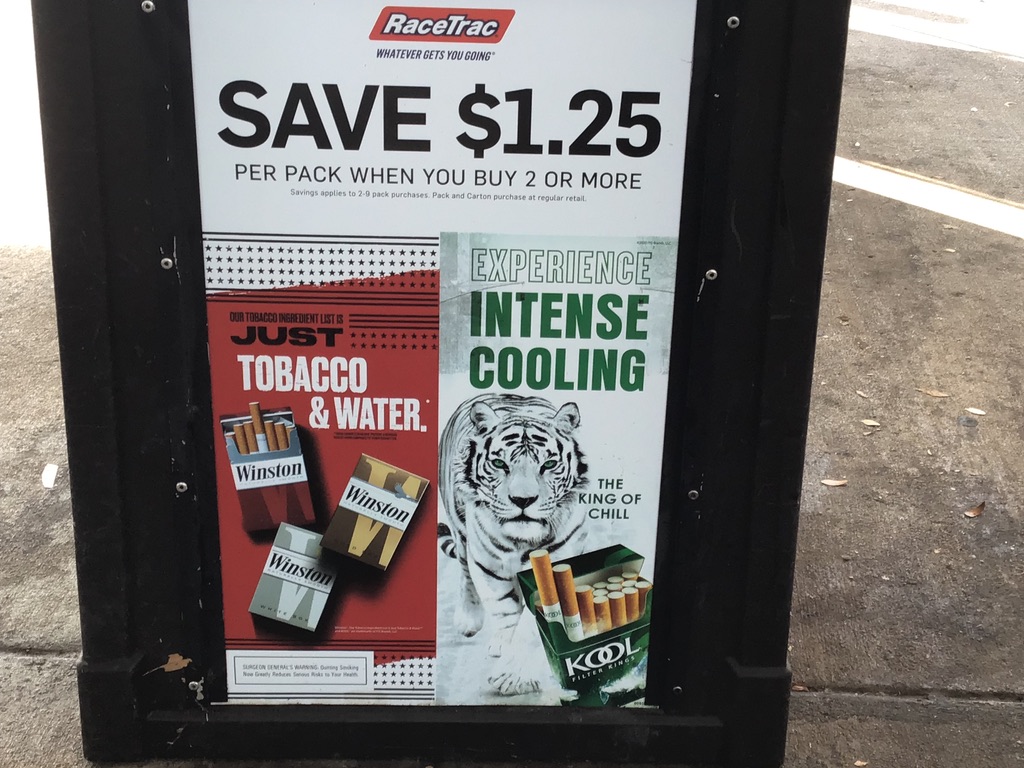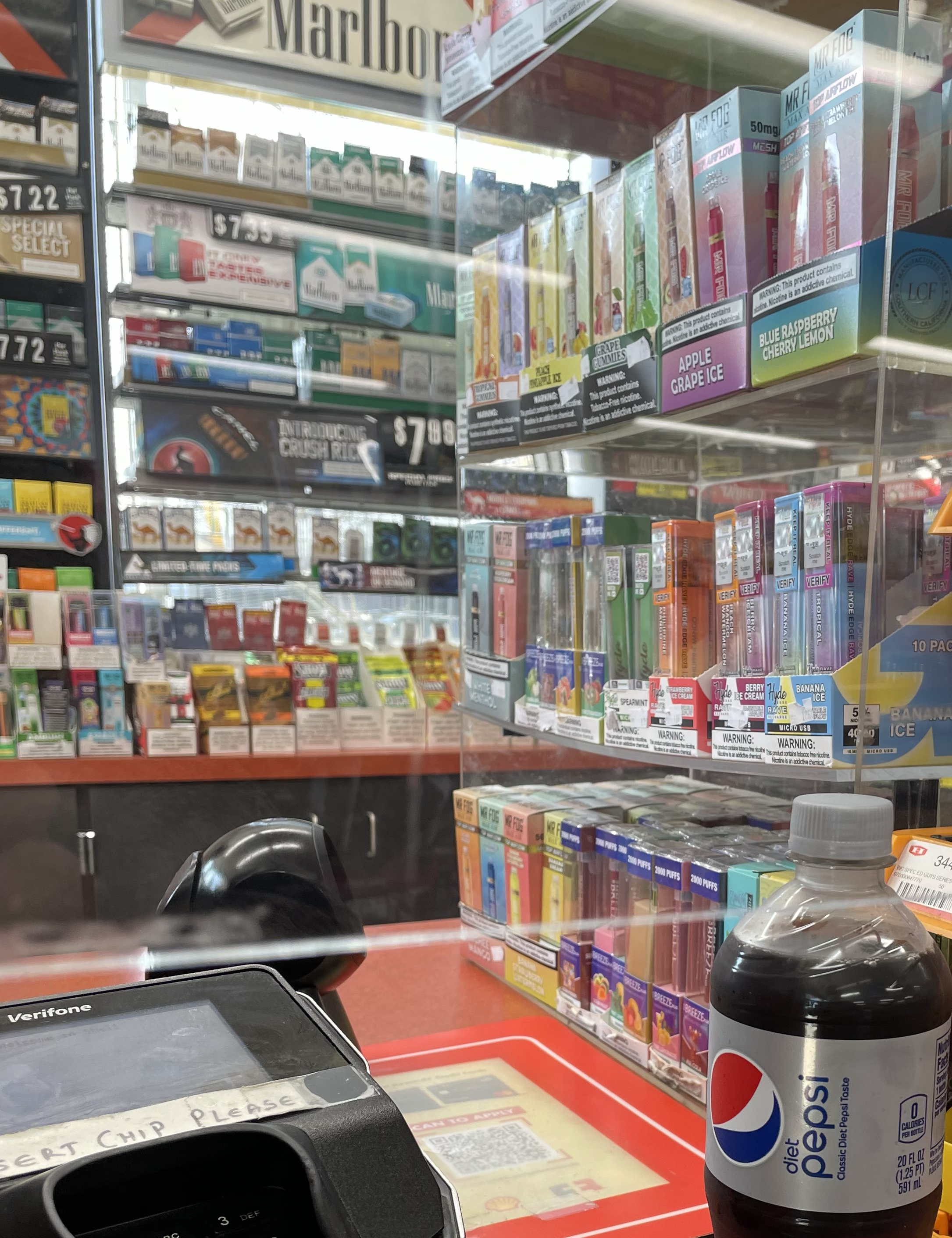Welcome to CounterTobacco.org’s “News and Research Roundup!” Each month we post a summary of the latest research, reports, and news stories on counteracting tobacco product sales and marketing at the point of sale (POS). Keeping up with what’s happening in the POS movement all across the country can help you choose policies and strategies that work best for your community. New research can help provide support for your work and evidence for the importance of the “War in the Store.” Have a story you don’t want us to miss? E-mail it to us!
New Research
Tobacco 21 Compliance
- ‘If you just tell me you’re 18, I’ll still sell to you’: A qualitative study of underage tobacco product purchasing experiences in a Tobacco 21 compliance study, Nicotine & Tobacco Research
- Researchers conducted semi-structured interviews with research assistants ages 18-20 in New Jersey, New York, and North Carolina about their experiences with underage tobacco buy attempts. Findings centered around four themes: themes: “(1) non-chain stores lacked consistency in verifying age; (2) female data collectors experienced uncomfortable situations more frequently than male data collectors; (3) not identifying with the store’s typical demographics impacted purchase attempts; and (4) participants suggested improvements for inspections and research during training.” Researchers conclude that retailer education, ID scanners, and enforcement could improve the standardization of how retailers request and verify ID for tobacco purchases. They also note that training for youth involved in underage buy attempts could include more extensive mock purchase training to improve their confidence, which in turn may increase the validity of the rate of sales to underage youth.
- Learn more about Tobacco 21 policies and effective enforcement.
Point-of-Sale Advertising and Displays
- Causal effects of point-of-sale cigarette promotions and subjective social status on cigarette craving: a randomised within-person experiment, Tobacco Control
 This study exposed adults who smoke cigarettes daily to images of cigarette promotions (both with and without discounts) and to images of non-smoking cues to assess the exposure’s impact on cravings. Participants experienced greater cravings when they viewed the cigarette promotions than when they viewed non-smoking cues and also greater cravings when they viewed a cigarette promotion with a discount compared to when they viewed a cigarette promotion without a discount. Researchers conclude that, “restricting point-of-sale promotions generally, and discounts specifically, could help reduce cigarette smoking and address tobacco use disparities in the USA.”
This study exposed adults who smoke cigarettes daily to images of cigarette promotions (both with and without discounts) and to images of non-smoking cues to assess the exposure’s impact on cravings. Participants experienced greater cravings when they viewed the cigarette promotions than when they viewed non-smoking cues and also greater cravings when they viewed a cigarette promotion with a discount compared to when they viewed a cigarette promotion without a discount. Researchers conclude that, “restricting point-of-sale promotions generally, and discounts specifically, could help reduce cigarette smoking and address tobacco use disparities in the USA.” - Learn more about restricting discounts and other point of sale pricing policies.
- Exposure to e-cigarette advertising and young people’s use of e-cigarettes: A four-country study, Tobacco Induced Diseases
- Researchers surveyed young people ages 15-30 across four countries (Australia, China, India, and the United Kingdom), about their exposure to e-cigarette advertising and e-cigarette use. They found that the more forms of e-cigarette advertising young people were exposed to, the more likely they were to use e-cigarettes. Exposure to e-cigarette advertisements was highest at vape shops/other retailers and on social media.
- Learn more about restricting tobacco advertising.
- Does removing menthol cigarettes in convenience stores reduce susceptibility to cigarette smoking? An experimental investigation in young people, Drug and Alcohol Dependence
- In this experiment, youth participants ages 11-20 shopped in a life-sized research convenience store with one of three tobacco displays: 1) all tobacco– sweet- and menthol-flavors displayed 2) only tobacco- and menthol-flavors displayed and 3) only tobacco flavors displayed. While participants had similar levels of susceptibility to smoking unflavored cigarettes after shopping across conditions, participants who had some pre-existing risk of cigarette smoking had higher levels of susceptibility to smoking menthol cigarettes after shopping when menthol-flavored products were removed compared to when all flavored products were available. This points to a possible unintended consequence of menthol bans.
- Learn more about menthol.
E-Cigarette Regulation
- Early evidence of flavored tobacco product restrictions in Massachusetts and New York State, Tobacco Induced Diseases
 Massachusetts banned the sale of flavored e-cigarettes in November 2019 and all flavored tobacco products in June 2020. New York state banned the sale of all flavored e-cigarettes in May 2020. Retail sales data from 2019-2020 showed that following their respective policies restricting the sale of flavored e-cigarettes, total e-cigarette sales decreased in both states. In addition, mint-flavored e-cigarette use decreased in Massachusetts and tobacco-flavored e-cigarette use increased in New York. A greater proportion of people also reported using disposable e-cigarettes in both states following policy implementation, highlighting the gap in federal regulation (which bans the sale of only cartridge-based flavored e-cigarettes) and the need for comprehensive policies.
Massachusetts banned the sale of flavored e-cigarettes in November 2019 and all flavored tobacco products in June 2020. New York state banned the sale of all flavored e-cigarettes in May 2020. Retail sales data from 2019-2020 showed that following their respective policies restricting the sale of flavored e-cigarettes, total e-cigarette sales decreased in both states. In addition, mint-flavored e-cigarette use decreased in Massachusetts and tobacco-flavored e-cigarette use increased in New York. A greater proportion of people also reported using disposable e-cigarettes in both states following policy implementation, highlighting the gap in federal regulation (which bans the sale of only cartridge-based flavored e-cigarettes) and the need for comprehensive policies. - Learn more about restricting product availability and flavored tobacco products.
- Effects of ‘Ice’ flavoured e-cigarettes with synthetic cooling agent WS-23 or menthol on user-reported appeal and sensory attributes, Tobacco Control
- In a within-participant double-blind experiment, researchers asked adult tobacco/nicotine users (exclusive e-cigarette, cigarette, and dual users) to rate the appeal and sensory attributes of pod-style e-cigarettes that either had menthol, the cooling agent WS-23, or no cooling agent added. Across base flavors, nicotine concentrations, and the participant’s tobacco use status, participants rating e-cigarettes with WS-23 as more appealing, smoother, cooler, and less harsh than e-cigarettes with no cooling agent. Participants were more likely report a willingness to try the product again and reported less bitterness and harshness in comparison to e-cigarettes with no cooling agent.
- Learn more about e-cigarettes at the point of sale.
Oral Nicotine Product Regulation
- Evaluating the effects of nicotine concentration on the appeal and nicotine delivery of oral nicotine pouches among rural and Appalachian adults who smoke cigarettes: A randomized cross-over study, Addiction
- This study compared nicotine delivery and craving relief from oral nicotine pouches with different nicotine concentrations compared to cigarettes among 30 adults who smoked cigarettes in rural/Appalachian Ohio. Researchers found that “using 6-mg nicotine concentration oral nicotine pouches (ONPs) was associated with greater plasma nicotine delivery at 30 minutes than 3-mg ONPs or cigarettes, but neither ONP relieved craving symptoms at 5 minutes as strongly as a cigarette.” In addition they conclude that, “Accelerating the speed of nicotine delivery in ONPs might increase their misuse liability relative to cigarettes.”
- News story: Popular ‘Nicotine Pouches’ Won’t Help Smokers Quit: Study, HealthDay
Youth Tobacco Use
- Tobacco Product Use Among U.S. Middle and High School Students – National Youth Tobacco Survey, 2023, Morbidity and Mortality Weekly Report
- According to the 2023 National Youth Tobacco Survey, “In 2023, 10.0% of middle and high school students reported current tobacco product use. From 2022 to 2023, current e-cigarette use among high school students declined from 14.1% to 10.0%. E-cigarettes remained the most commonly used tobacco product among youths. Among middle school and high school students who currently use e-cigarettes, 25.2% used e-cigarettes daily, and 89.4% used flavored e-cigarettes.”
New Reports and Resources
- The Nicotine-Free Generation Approach: A Policy Option Overview, Public Health Law Center
- Flavor Cards and their Significance for Comprehensive Commercial Tobacco Control Laws, Public Health Law Center
- State Menthol Fact Sheets, CDC
Industry News
- PMI Submits Applications for Iqos Iluma, CSP Daily News
- Philip Morris develops zero-tobacco heat stick that may avoid regulations, Reuters
POS Policy in the Media
Licensing, Zoning, and Retailer Density
- [CA] Santa Rosa studying more stringent regulations to curb youth smoking, Press Democrat
- [MO] Tobacco retailers sue St.Louis County over ban on sales near schools, St. Louis Dispatch
- [NC] Possible Cumberland County amendment could place new restrictions on tobacco and hemp shops, Fayetteville Observer
- [OH] Lorain requires license for tobacco sellers, Chronicle
- [OH] City Council discusses tobacco retailer licenses, Athens Post
- [OH] Brunswick considers tobacco sales licensing for retailers, Cleveland.com
Menthol and Other Flavored Tobacco Product Sales Restrictions
- [IL] Evanston bans flavored tobacco sales, approves utility rate hike, Daily Northwestern
- [ME] Hallowell considers ban on sale of flavored tobacco, CentralMaine.com
- [NJ] N.J. could become 3rd state to ban menthol cigarettes as plans gain momentum, NewJersey.com
- [OH] Shaker Heights mulls ban on flavored nicotine products, joins Tobacco 21, Cleveland.com
- [OH] Ohio GOP lawmakers want to override DeWine veto on flavored tobacco bans, Cincinnati.com
- [PA] Big Tobacco must be held accountable for harming Black health, Philadelphia Tribune
Other
- Disposable vapes are creating an even bigger problem than Juul, Verywell Health
- Formerly Philip Morris-backed foundation severs ties with nicotine industry, Reuters
- New Zealand’s new government plans to roll back cigarette ban as it funds tax cuts, NPR
Find more stories in last month’s News and Research Roundup.
Know of a story that we missed? Email us, and we’ll be sure to include it in next month’s roundup!


